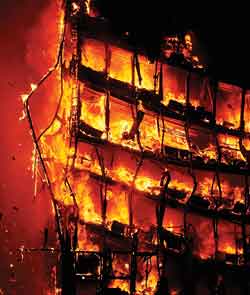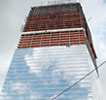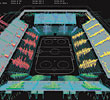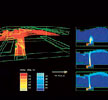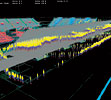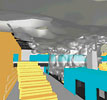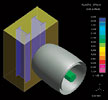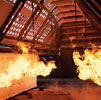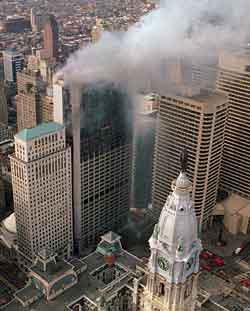A New Era for Fire Protection and Life Safety
While NIST awaits public comments about its investigation into the Causes of the collapse of the World Trade Center Towers, tall Buildings Continue to Rise
![]() Continuing Education
Continuing Education
Use the following learning objectives to focus your study while reading this month’s Continuing Education article.
Learning Objectives - After reading this article, you will be able to:
- Discuss increasing construction and design requirements for high-rise buildings.
- Explain the concept of three rings of defense for high-rise buildings.
- Describe methods of redundancy and diversity for defense of buildings.
On June 23, the National Institute of Standards and Technology (NIST) released a 10,000-page report on the collapse of the World Trade Center (WTC) on September 11, 2001, now starkly referred to in shorthand as 9/11. The report (available atwtc.nist.gov) was conducted over three years under the authority of the National Construction Safety Team (NCST) Act, which had been signed into law on October 1, 2002.
According to the report's executive summary, the goals of the investigation were to examine the building construction, materials, and the technical conditions that contributed to the chain of events resulting from the collision of two commercial airliners into the WTC Twin Towers. The investigation yielded a plethora of recommendations for improvements in the way buildings are designed, constructed, maintained, and inhabited, as well as suggestions for revisions to current codes, standards, and practices. Thirty recommendations are divided into the following eight groups: increased structural integrity, enhanced fire resistance of structures, new methods for fire-resistance design of structures, active fire protection, improved building evacuation, improved emergency response, improved procedures and practices, and education and training.
While these recommendations will greatly influence the course of building-code revisions for decades to come, NIST is a nonregulatory agency of the U.S. Department of Commerce with no statutory authority to assign fault or negligence or mandate code revisions. Its main mission is fact-finding, in order to improve the safety and structural integrity of all buildings. "NIST's recommendations do not contain specific language regarding proposed code or law changes, but rather areas where code, product, or policy development changes should be made or considered," explains James Quiter, ArupFire principal. Quiter chairs the High Rise Building Safety Advisory Committee, formed by the National Fire Protection Agency (NFPA) to review the report with NIST officials and formulate responses. In addition, various structural-engineering organizations, the American Institute of Architects, the Society of Fire Protection Engineers, and others have formed committees to look at and respond to the report. Several of the major engineering firms, including Arup, have also formed in-house review groups to coordinate official responses to the report.
|
The overall impact of the report remains to be seen. There are some recommendations, which, if taken to their fullest extent, could have substantial ramifications for tall-building design. Several recommendations have already been implemented independently. There are still others that will need to wait for further development of new products, but as Skidmore, Owings and Merrill's (SOM) technical architecture partner, Carl Galioto, FAIA, predicts, the issuance of the report may spur that development.
In the meantime, tall buildings continue to rise. There are 96 high-rise buildings under construction in New York City, according to Emporis, an information provider with a focus on high-rise buildings (12 floors and more). Until the codes change to reflect the NIST recommendations, decisions about how far a project should go beyond complying with existing codes is left to the architects, engineers, and owners who design and pay for them. Safety issues notwithstanding, their choices continue to be influenced by economics, building use, location, and in the case of post-9/11 New York, the public profile of the building.
A phoenix rises
Seven World Trade Center (7WTC) was the last building to collapse on September 11, 2001, after burning for seven hours. Today, it's the first to be rebuilt at Ground Zero. The 52-story building, designed by the New York office of SOM for Silverstein Properties, will enclose 1.7 million square feet of commercial office space.
SOM, structural engineers WSP Cantor-Seinuk, and m/e/p and fire-protection engineers Jaros, Baum & Bolles examined a host of options as they developed a plan for 7WTC. SOM's Galioto describes the team's strategy for designing a structure at Ground Zero, a site with arguably the world's most infamous parcel of real estate, as comprising three concentric rings of defense-suppression, protection, and evacuation. Within each ring, the design team fortified life-safety features by inserting what Galioto refers to as redundancy and diversity, in an effort to ensure, as much as is technologically possible, continuous performance of all systems in every likely circumstance.
"The first ring of defense calls for suppressing the fire where it starts, creating greater opportunity for evacuation and less property damage," Galioto explains. In the wake of 9/11, fire experts have raised concerns about the reliability, or rather the vulnerability, of sprinkler systems. SOM has rigorously applied the principles of redundancy and diversity to mitigate these concerns. "With regard to redundancy, we followed several courses simultaneously. We increased the density of sprinkler heads, constituting an upgrade from ‘light hazard' to ‘ordinary hazard.' " (The 2002 NFPA 13 handbook of "Codes and Standards" classifies types of hazards requiring sprinklers as light, ordinary, or high.)
The second redundancy addresses the reliability of water supply to the sprinklers. Most building codes require only one riser to feed all the sprinklers. SOM doubled the supply by inserting a separate standpipe in both stairwells. Each supply alternates floors: One provides water to the even-numbered floors, the other to the odd-numbered ones. "This ensures that if one fails, no two consecutive floors will be without water," he continues, thus increasing the ability to suppress the vertical spread of the fire. "There has never been a fire in a high-rise commercial building in the U.S. that has spread in this manner if the sprinklers were functioning properly." He cites the fierce 1991 Meridian Plaza fire in Philadelphia as an example. "The building was in the process of having a sprinkler system installed. The fire spread vertically through the floors where sprinklers had not been installed. When it reached the levels where new sprinklers were operative, the fire was suppressed."
At 7WTC, the two risers are interconnected at the top and bottom of the building, creating a loop. "If there were two completely independent risers, then a break in one riser would cut off water to every floor," explains Galioto. "With a system of valve isolation, the loss of sprinkler protection could be limited to a section of the riser, and the water could still be supplied from above and below the break." If the water supply is ruptured at a point along the loop, breach-control values automatically engage to prevent the system from draining out. Diversity is achieved by specifying, rather than a single tank, multiple tanks in various locations throughout the building. In addition, whereas the code requires a 30-minute supply of water, the 7WTC system doubles the output to an hour.
|
||||||||||
The second ring of defense addresses protection of the structure. 7WTC is a steel structure with a concrete core. Spray-applied fire-resistant materials (SFRM) are the standard method of passive fire protection for steel. It goes without saying that fireproofing is only effective if it stays adhered to the structure. Unfortunately, building-performance analysis of the World Trade Center towers on 9/11 showed that the impact of the aircrafts dislodged the fireproofing materials on the steel columns, exposing them to extreme heat.
In response, the 7WTC team carefully considered the properties of existing SFRM products. There are two factors determining performance of SFRM-density and bond strength. Density refers to the amount of mass per unit volume. Bond strength refers to the amount of force required to separate the fireproofing from the steel. SOM sought a material with strength and adhesion superior to that required by the New York City code, and selected a medium-density, portland-cement-based product called Monokote Z-106/HY from Grace Construction Products. Galioto is confident that manufacturer's claims that the product's bond and compressive strengths are five times higher than the building-code requirements for steel structures are correct.
The design team did not rely solely on superior fireproofing for structural protection. The elevator and stair cores are high-strength, reinforced, poured-in-place-concrete enclosures, varying in thickness from 12 to 28 inches depending on floor level. The issues regarding the cores lead directly to the third ring of defense-evacuation, which takes place, of course, inside the cores. The first improvement was simple enough-increase the space by making the stairwells 20 percent wider than the code requires. The goal was to increase the flow of occupants out of the building without impeding the counterflow of emergency responders rushing in.
While it's a given that stairwells, regardless of width, must remain clear of smoke, there are different schools of thought on the best way to achieve this. Galioto says that New York City codes show a preference for purging smoke that migrates into the stairwells via a ventilation system. SOM went a step further and adopted the International Building Code, which, unlike New York City's current regulations, requires both ventilation and pressurization. At 7WTC, in addition to an exhaust system, air will be forced into the stairwells, creating a positive pressure within the enclosure, thus preventing most smoke from invading the space around door frames. In addition, the fire department will control the system by regulating both pressurization and exhaust, depending on actual conditions.
|
||||||||||
The team made every effort to guarantee uninterrupted lighting in the stairwells. Local codes require that stairwells in commercial buildings be finished with photo-luminescent paint that will glow in the dark in the event of total power failure. The engineers added a redundancy between the generators and the paint and backed up the generators with a battery-powered source.
The stairs reach a transfer level toward the base on the building. At this juncture, the two stairwells split into four at the building's perimeters, in order for occupants to exit directly to grade, rather than into the public lobby. At the transfer level, interactive signs direct occupants to specific paths of egress. And as with all the life-safety features, the signs can be manually overridden by the fire department, as the situation dictates.
Prescriptive- vs. performance-based
The life-safety features at 7WTC are, to a certain extent, an acknowledgement of the shift away from existing prescriptive-based codes to performance-based ones. ArupFire has done considerable work in this area and is an advocate for performance-based design. Performance-based codes are already in use in a number of countries around the world, and in the U.S., the International Code Council has developed a performance-based building code along with NFPA, which has performance options in its building code, NFPA 5000. Various performance-based design guides are also in use or under development: The Society of Fire Protection Engineers, for example, has developed a performance-based fire-engineering guide, and the Applied Technology Council is developing performance-based seismic-design guidance.
|
||||||||||
Brian Meacham, who leads the risk consulting business for Arup in North America, understands the primary difference between prescriptive-based and performance-based approaches: "Prescription focuses on what you need to do, and performance focuses on what outcomes you want to achieve. Prescriptive-based codes prescribe what must be designed, and in many cases how to design it, without providing any indication of the objective of the provision. For example, prescriptive egress provisions include maximum travel distances, separation distances between exits, and width of exit stairs. The design aspect is, therefore, fairly straightforward and often limited in options," he explains. Meacham believes that after 9/11, it makes more sense to incorporate performance-based approaches in both building codes and building design. A performance-based approach helps answer questions about how much fire resistance is needed, what fire-protection systems are appropriate, and what features an egress system should have. "Performance-based codes regarding egress, for example, would require the egress system to be designed with adequate capacity and protection to provide occupants with sufficient time to reach a place of safety without being exposed to untenable conditions," he says. "By stating the desired outcome, a performance-based code requires the fire-protection engineer to assess the fire hazard, as well as the time required for egress, and to design an integrated egress solution that achieves the stated performance."
|
ArupFire strategist Chris Marrion, whose special interest involves extreme events, advocates performance-based codes and adds, "Codes typically do not address extreme events such as blast, impact, and chemical/biological hazards. A threat and risk assessment for an individual building can help identify what blast, impact, and chemical or biological hazards it may be susceptible to." These arguments for performance-based codes are applicable to all risks, but they will be useful beyond life safety in areas such as energy efficiency and conservation, curtain-wall design, and material selection. In the near future, unfortunately, the focus will remain fixed on avoiding and confronting danger.

